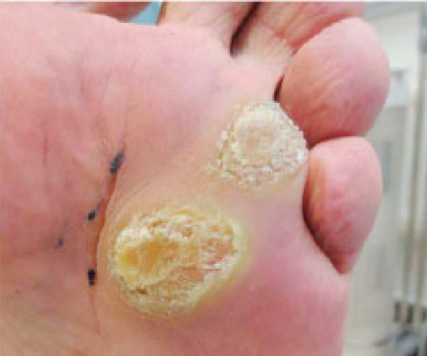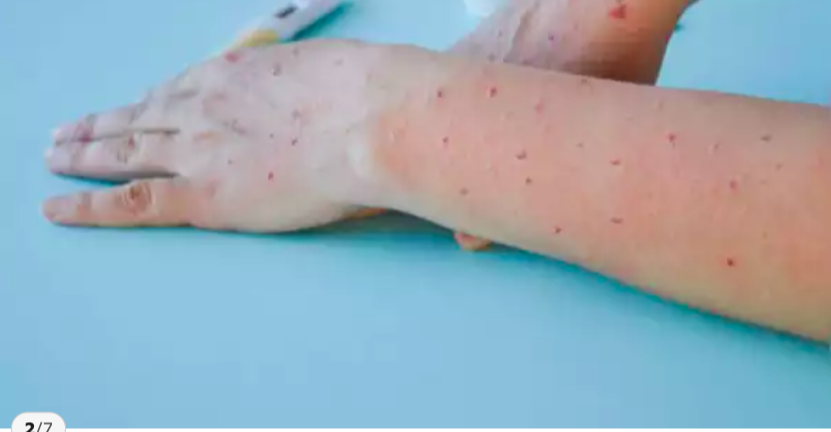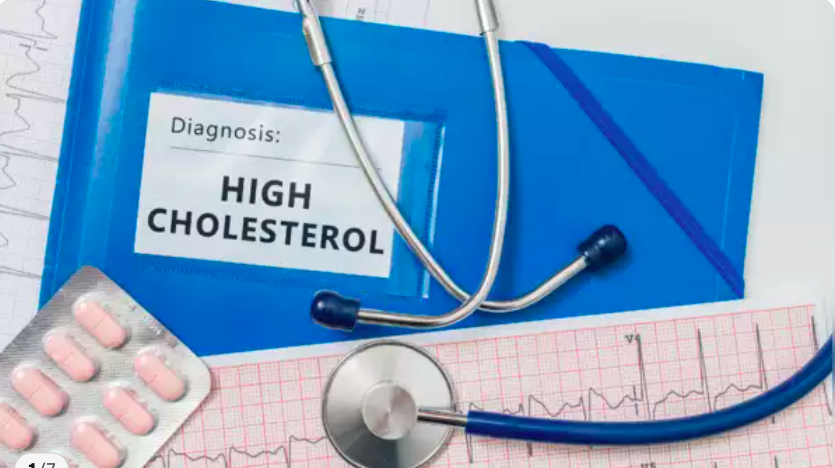Health
Understanding Warts: Causes, Types, and Treatments

Understanding Warts: Causes, Types, and Treatments
Warts are small, benign growths that appear on the skin, often causing distress due to their appearance and sometimes discomfort. While generally harmless, warts can be persistent and challenging to remove. This article delves into the causes of warts, their types, treatments, and prevention methods, providing a comprehensive understanding of this common skin condition.
What Are Warts?
Warts are caused by the human papillomavirus (HPV), which has more than 100 different strains. These viruses cause the skin to grow excessively, leading to the formation of a wart. While warts can appear anywhere on the body, they are most commonly found on the hands, feet, face, and genitals.
Types of Warts
Common Warts (Verruca Vulgaris)
These warts typically appear on the hands and fingers. They are rough, raised, and have a cauliflower-like surface.
Plantar Warts
Found on the soles of the feet, plantar warts can be painful due to their location. They often appear flat due to pressure from walking and can have small black dots on their surface, which are tiny blood vessels.
Flat Warts (Verruca Plana)
Flat warts are smaller and smoother than other types. They often appear on the face, thighs, or arms and tend to grow in large numbers.
Filiform Warts
These warts appear around the mouth, nose, or beard area. They are long and thread-like, making them distinctive and often more bothersome due to their location.
Genital Warts
A sexually transmitted infection caused by certain strains of HPV, genital warts appear on the genital and anal areas. They can be small or large, flat or cauliflower-like, and may cause discomfort or itching.
What Causes Warts?
Warts are caused by direct contact with HPV. The virus can be contracted through skin-to-skin contact or by touching surfaces contaminated with the virus, such as shower floors or towels. Factors that increase the risk of developing warts include:
- Weakened Immune System: Individuals with weakened immune systems are more susceptible to HPV infections.
- Damaged Skin: Cuts, scrapes, or other skin injuries can provide an entry point for the virus.
- Personal Habits: Nail-biting or picking at hangnails can introduce the virus to the skin.
How Are Warts Diagnosed?
Doctors usually diagnose warts based on their appearance. In some cases, a biopsy may be performed to rule out other skin conditions.
Treatment Options for Warts
While warts often go away on their own, many people seek treatment to remove them sooner.
Treatment options include:
Over-the-Counter Treatments
- Salicylic Acid: Available in various forms such as gels, pads, and drops, salicylic acid helps peel away the wart.
- Freezing Sprays: These products freeze the wart, causing it to fall off over time.
Medical Treatments
- Cryotherapy: Performed by a healthcare professional, this treatment involves applying liquid nitrogen to freeze the wart.
- Laser Treatment: Lasers can be used to destroy the blood vessels supplying the wart, causing it to die.
- Surgical Removal: In some cases, warts may be surgically removed, although this is usually a last resort.
- Cantharidin: Applied by a doctor, this substance causes a blister to form under the wart, lifting it off the skin.
Home Remedies
- Duct Tape: Covering the wart with duct tape for several days may help remove it.
- Garlic: Some people apply crushed garlic to the wart, believing its antiviral properties may help.
Prevention Tips
Preventing warts involves avoiding contact with HPV. Here are some tips to reduce the risk:
- Maintain Good Hygiene: Wash hands regularly and keep feet clean and dry.
- Avoid Direct Contact: Refrain from touching warts on yourself or others.
- Protect Your Feet: Wear sandals in communal showers or locker rooms.
- Do Not Share Personal Items: Avoid sharing towels, razors, or other personal items.
Living with Warts
While warts can be annoying, they are generally harmless and manageable. For those with persistent or bothersome warts, consulting a healthcare provider can help determine the best treatment plan.
Conclusion
Understanding the causes and types of warts is the first step in effective treatment and prevention. Whether opting for over-the-counter remedies, medical treatments, or home solutions, managing warts is achievable. By maintaining good hygiene and avoiding direct contact with the virus, the risk of developing warts can be significantly reduced.
FAQs about Warts
1: Can warts spread from person to person?
Yes, warts are contagious and can spread through direct skin-to-skin contact or by touching surfaces contaminated with HPV.
2: Are warts dangerous?
Warts are generally harmless, but they can be unsightly and sometimes painful. Certain types, like genital warts, require medical attention due to their association with other health risks.
3: How long do warts last?
Warts can last from a few months to several years. Some warts go away on their own, while others may require treatment.
4: Can warts be prevented?
While it’s difficult to completely prevent warts, maintaining good hygiene, avoiding direct contact with warts, and not sharing personal items can reduce the risk of getting them.
5: Is there a vaccine for warts?
There is no vaccine specifically for warts, but the HPV vaccine can protect against the strains of HPV that cause genital warts and reduce the risk of certain cancers.
References
Health
6 Daily Habits to Naturally Lower Cholesterol Levels
Health
Understanding the Rapid Spread of Monkeypox’s New Strain Clade 1b

Understanding the Rapid Spread of Monkeypox’s New Strain Clade 1b: Key Facts on Transmission, Symptoms, Severity, and Vaccination
Monkeypox, a viral disease with symptoms resembling smallpox, has recently gained attention due to the emergence of a newstrain, Clade 1b.
This article delves into the essential details about this new variant, including how it spreads, its symptoms, its severity, and the current state of vaccinations.
Our goal is to provide a comprehensive and clear understanding of this evolving situation, enabling readers to stay informed and prepared.
Monkeypox, once a rare and somewhat obscure disease, has recently become a significant public health concern due to the emergence of new strains.
Among these, Clade 1b has been noted for its rapid spread and distinct characteristics.
As we navigate through the complexities of this variant, it is crucial to grasp the fundamentals of its transmission, symptoms, severity, and preventive measures, including vaccination.
Understanding Monkeypox Clade 1b
What is Monkeypox?
Monkeypox is a zoonotic virus belonging to the Orthopoxvirus genus, which also includes smallpox.
First identified in monkeys, it can infect humans through close contact with infected animals or individuals.
While it shares similarities with smallpox, monkeypox tends to be less severe and less transmissible.
Clade 1b Overview
Monkeypox has several clades (strains), with Clade 1b being the most recent and notable for its rapid spread.
This strain has shown increased transmissibility compared to previous clades, raising concerns among public health officials.
Transmission of Clade 1b
Modes of Transmission
Clade 1b spreads primarily through:
- Direct Contact: Contact with bodily fluids, skin lesions, or contaminated surfaces of an infected person.
- Respiratory Droplets: Prolonged face-to-face interaction can lead to transmission through respiratory droplets.
- Animal Contact: Infected animals, particularly rodents and primates, can transmit the virus to humans.
Environmental Factors
Transmission rates can also be influenced by environmental factors such as:
- Crowded Living Conditions: Higher transmission rates are observed in densely populated areas.
- Sanitation Practices: Poor hygiene and sanitation can facilitate the spread of the virus.
Symptoms of Monkeypox Clade 1b
Early Symptoms
The symptoms of Clade 1b may resemble those of other viral infections, making initial diagnosis challenging.
Early symptoms include:
- Fever: A sudden onset of high temperature.
- Headache: Severe headaches that can persist for days.
- Muscle Aches: Generalized muscle pain and discomfort.
- Fatigue: Extreme tiredness and weakness.
Rash and Skin Lesions
A defining feature of monkeypox is the rash, which typically progresses through several stages:
- Macules: Flat, discolored spots on the skin.
- Papules: Raised bumps.
- Vesicles: Fluid-filled blisters.
- Pustules: Pus-filled lesions that eventually crust over.
Severe Symptoms
In more severe cases, symptoms may include:
- Encephalitis: Inflammation of the brain, leading to neurological symptoms.
- Pneumonia: Infection of the lungs that can cause difficulty breathing.
- Secondary Infections: Bacterial infections that may complicate the healing process.
Severity of Clade 1b
General Outlook
Clade 1b has been associated with a higher transmission rate and more severe outcomes compared to other strains. However, the overall severity can vary widely among individuals.
Factors influencing severity include:
- Immune System Status: Individuals with weakened immune systems or pre-existing conditions may experience more severe symptoms.
- Age: Young children and elderly individuals are at higher risk of severe illness.
- Timeliness of Medical Care: Early medical intervention can significantly affect the outcome.
Mortality Rates
The mortality rate for Clade 1b is currently under study, but initial data suggest it may be higher than previous strains. Prompt medical attention and supportive care are crucial in reducing the risk of severe outcomes.
Vaccination and Prevention
Current Vaccines
Vaccination is a key strategy in controlling the spread of monkeypox.
The following vaccines are relevant:
- Smallpox Vaccine: The smallpox vaccine is effective against monkeypox due to the similarities between the viruses. It provides protection for those who have been recently vaccinated or who received it in the past.
- Monkeypox-Specific Vaccine: Research is ongoing into vaccines specifically targeting monkeypox, with several candidates showing promise in trials.
Vaccination Recommendations
Public health authorities recommend vaccination for:
- Healthcare Workers: Individuals who are at higher risk due to their profession.
- High-Risk Populations: People in areas experiencing outbreaks or those with frequent exposure to infected individuals.
Preventive Measures
In addition to vaccination, preventive measures include:
- Good Hygiene: Regular handwashing and use of hand sanitizers.
- Avoiding Contact: Minimizing close contact with individuals displaying symptoms or with infected animals.
- Isolation: Infected individuals should isolate themselves to prevent the spread of the virus.
Conclusion
The emergence of Monkeypox Clade 1b represents a significant challenge to global health. Its increased transmissibility and potential for severe outcomes highlight the importance of staying informed and proactive.
By understanding its transmission, symptoms, and preventive measures, individuals and communities can better protect themselves and mitigate the impact of this new strain.
FAQs
1. What makes Clade 1b different from other monkeypox strains?
Clade 1b is noted for its increased transmissibility and potentially more severe outcomes compared to other strains.
It spreads faster and may lead to more serious health issues, necessitating closer monitoring and enhanced preventive measures.
2. How can I tell if I have monkeypox or another viral infection?
Monkeypox often begins with flu-like symptoms and progresses to a distinct rash.
If you experience these symptoms, especially if you’ve been in contact with someone who has monkeypox or are in an outbreak area, seek medical advice for accurate diagnosis and testing.
3. Is the smallpox vaccine effective against Monkeypox Clade 1b?
Yes, the smallpox vaccine offers protection against monkeypox, including Clade 1b, due to the similarities between the two viruses.
However, its effectiveness may vary based on factors such as time since vaccination and individual health conditions.
4. Are there any new vaccines specifically for monkeypox?
Research is ongoing to develop and approve vaccines specifically targeting monkeypox.
Several candidates are in various stages of clinical trials, with some showing promising results in enhancing protection against monkeypox strains, including Clade 1b.
5. What should I do if I suspect I have monkeypox?
If you suspect you have monkeypox, contact a healthcare provider immediately. They can guide you through testing, diagnosis, and appropriate care.
In the meantime, practice good hygiene and avoid close contact with others to prevent spreading the virus.
References:
Health
Understanding the Low Risk of Mpox Outbreak in India and Our Preparedness Measures

-

 Trending Stories1 year ago
Trending Stories1 year agoCDC: 1 in 4 Americans Still COVID-Free by End of 2022
-

 Health5 years ago
Health5 years agoMeghan Trainor Shares Motivational New Song ‘Blink’
-

 Health2 years ago
Health2 years agoHow Long Does Monkey Pox Last Before It Surfaces in the Body?
-

 Health2 years ago
Health2 years agoWhat Causes Swollen Body? Understanding Edema and its Triggers
-

 Health4 months ago
Health4 months agoHow Do Pawpaw Seeds Support Cardiovascular Health?
-

 Health3 years ago
Health3 years agoNutrition and the Importance of a Fitness Program – 3 Things to Know
-

 Health3 years ago
Health3 years ago5 Weird Reasons Why Pimples Disappear After Marriage
-

 Health2 years ago
Health2 years agoHealth Benefits Of Pawpaw Seed? 7 Things To Know






